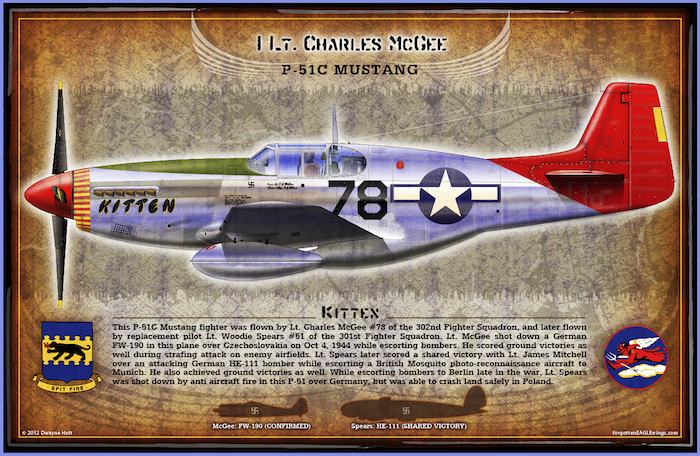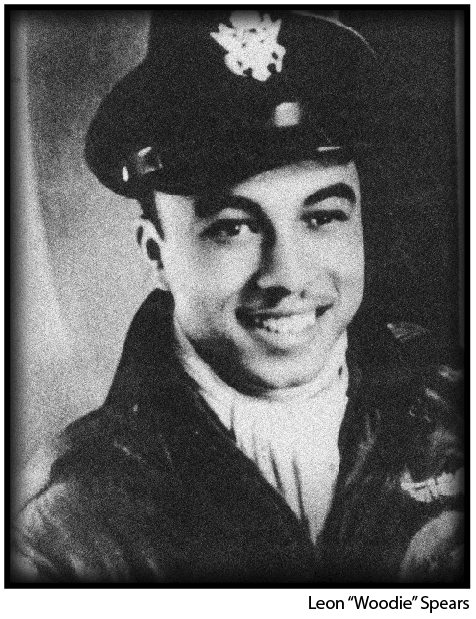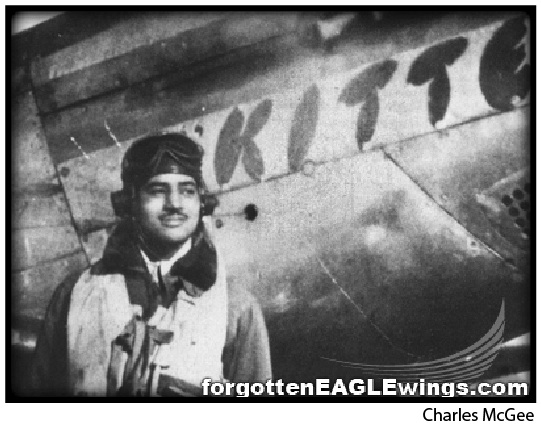An interview with
Lt. Leon "Woodie" Spears
Original Tuskegee Fighter Pilot
and Red Tail Angel
by Dwayne Holt


Hasegawa's 1/32 scale Me 163 B is available online now from Squadron
Tuskegee fighter pilot, the late Lt. Leon ‘Woodie” Spears, was born in Colorado in 1924. He earned his wings on June 24, 1944 with the class of 44F at Tuskegee. He is an original “Red Tail” serving with the 301st Fighter Squadron, 332nd Fighter Group.

He mastered the P-40, P-39, P-47 and the P-51. He served his country in both WW2 and Korea. Mr. Spears flew “51” combat missions in the “P-51” with a “51” buzz number on the side at Ramitelli, Italy. He scored a number of ground victories as well as getting a shared air combat victory over a German HE-111 bomber.
I met Mr. Spears through the Tuskegee Airmen organization in the S.F. Bay Area in the late 1990s. The President of the SFBAC, the late William “Bell” Jackson introduce me to Mr. Spears during one of the meetings when I was a member of the chapter.
It was in early 1999 that I conducted a number of interviews over his house, including this one. He did not live to far from me, so I would drive down to see “Woodie” to talk about his combat experience over the weekend with tape recorder and note pad in hand. This interview is a edited question/answer piece that was published in Air Classic magazine in 1999. No known photo existed of Mr. Spears whole aircraft called “KITTEN” until this cropped Toni Frissell photograph was discovered.
The illustration is the result of a in-depth interview with “Woodie” as he had described his aircraft to me. I also interviewed Charles McGee concerning this same aircraft that he also flew.

Please note that when the 302nd Fighter Squadron was disbanded all the aircraft went to the remaining squadrons. Kitten was picked up by Mr. Spears at a sub-depot station. The aircraft squadron markings were revised and a new “buzz” number was assigned.
The Interview with Lt. Leon Spears |
Spears: I flew this P-51C around the end of 1944. I was assigned to the 301st Fighter Squadron from the 302nd Fighter Squadron, so I had to pick up my new plane from the sub-depot station in either North Africa or Southern Italy. When I saw the plane, I noticed it had the name “KITTEN” on the side of the nose. I believed this plane originally belonged to Charles McGee of the 302nd FS. I believe I know why he called it “KITTEN”, because the engines sure “purred” like one when I fired it up. I remember this plane well because I had a number “51” on the side of the plane, my plane was a P-51 with “51” on the side.
Q: Can you describe the loss of your P-51 named "Kitten"?
Spears: I was hit by German 88 guns during a mission over Berlin at 32.000 feet. That's almost six miles straight up! There was no way I could get back to Italy and make it over the Alps, so I had to crash land "Kitten" in Poland. I would have to be at least 18.000 feet to cross the mountains. I knew by the way my engine was sounding that I would be no way near 18.000 feet to make it home. I turned 90 degrees west toward Poland and I landed near this river. The Germans were on one side of the river and the Russians were on the other side. Between the two of them they shot my plane to pieces. You see, when the P-51 Mustang is flying directly at you it looks like an Me-109 from certain angles. While I was flying down this river I could feel shells hitting the plane. I said to myself, well, I'm on this side of the river so the shells got to be coming from those Russians. Once they saw that I was an American they stopped firing at me. As I remember, I saw myself coming toward this runway. I said to myself that if I let the wheels down I could probable make a pretty good landing. I decided not to land because I did not want the enemy to use the plane. As I was in the process of putting the wheels up I hit the ground. I did not have enough power to work the hydraulics.
Surprisingly, it was Germans that came right away in a car. There were two officers and three enlisted men in Nazi helmets and they had their guns pointed right at me. I put my hands in the air and they motioned for me to come close. They could see that I had a .45 pistol. They made motions that they wanted that .45 on the ground, which I did. It seems to me that they were trying to be as nice as they could because they knew that the war was coming to an end for them, so they did not want to get too cruel. The Germans did know about the Geneva Convention which dealt with war crimes. They did not want to be involved in any war crimes. They sat me in the car and drove to their headquarters. I was interrogated by a German official who asked if could speak English. He asked me where did I come from. I told him. "I'm sorry, I can't tell you. I can tell you my name. rank and serial number." I said. "You know the Geneva Convention don't you. He said, "Yes", whenever he would ask me something. I would mention the Geneva Convention then he would say, "I'm sorry I ask," and that was it. They knew full well that any information they could get would be useless for them. I was only with them for three days.
The Russians were in Poland and they were advancing about 25 to 35 miles a day. At about the third day I heard all this ripping and roaring, and the building was shaking and everything. All the glass was out of the windows, but I pulled a board off a window area and the first thing I saw was this huge Russian tank. There were 40 or 50 guys surrounding it going through the town blowing up buildings. This scared me because I thought that they would blow this building up that I was in. I was screaming and hollering to them and a guy that looked like a Russian officer looked up and saw me. When I saw him looking at me I had a A-2 flight jacket on with a large American flag on the back. I put my back to the window so he could see it and I could hear him yell. "American! American! " He came up and gave me a big bear hug!
Q: Please relate your first combat encounter with enemy aircraft.
Spears: I had an air combat encounter in "Kitten" when my flight of about five aircraft escorted a... I believe it was a British Mosquito reconnaissance plane over a target area. He led us while we kept him in sight. We escorted him to the Munich area to this German ball bearing factory. As soon as he started his photo run, we backed off a little so he could do his work. He had to fly straight and level. The Mosquito was a very fast plane. When we came back from the target area he just out ran us. We could not keep up with him because of his speed. We heard him say on the radio "ta. ta. chaps!", and just keep on going past us. As we started after him we noticed a He-111 bomber turning in our direction. Well, we turned into him. When he saw us turning, I could see iittle specks coming out the bottom of the bomber, which meant he was firing his hand-held machine guns. He did not hit us. I think he waited too long to fire because we were just right on top of him. By the time he made his turn we started to fire on him. We keep firing and I could see pieces coming off and then smoke and fire would come out and then the plane went in toward the ground sideways. Both me and James Mitchell destroyed this aircraft and shared the victory.
Q: Were you allowed to put ground victory markings on your plane?
Spears: No. I did get quite a few ground victories.
Q: What squadron were you in?
Spears: When I first got overseas I was with the 302nd Fighter Squadron, which was later disbanded. The guys with the 302nd FS went to the 99th FS, the 100th FS and the 301st FS. I went to the 301st FS.
Q: How come the 302nd FS was disbanded?
Spears: Well, a group with four squadrons would be a bit much, logistically and tactically. What they did was beef up the three squadrons. Instead of having four lesser squadrons they had three larger squadrons.
Q: Did the markings of 302nd FS Mustangs stay the same when they were transferred to the other three squadrons?
Spears: The planes came with you, all the markings were the same from the previous squadron. My P-51 strangely enough had the number "51" on the side when I received it! |
Home
| What's New | Features | Gallery | Reviews | Reference | Resource Guides | Forum |